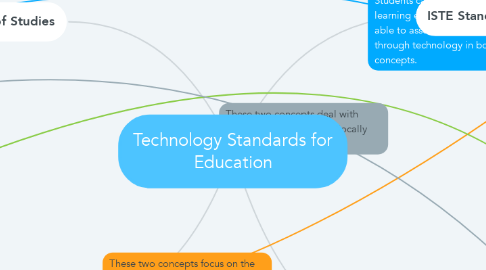Technology Standards for Education
by Lise Roy-Maxwell

1. Learning and Technology Policy Framework
1.1. 1. Policy Direction 1. c. - Students will learn the concepts of online ethical behavior (digital citizenship) and technological skills through a practical infused approach
1.2. 2. Policy Direction 1: Student-Centred Learning - Students can take control of their learning by utilising technology in an individualised and unique manner.
1.3. 3. Policy Direction 3: Professional Learning - to support and promote learning and teaching, all educational professionals must learn the skills needed to develop, maintain and apply technology in efficient and creative ways.
2. ICT Program of Studies
2.1. 1. F3 Foundational Operations, Knowledge and Concepts - students will learn and follow ethical and moral practices in their use of technology
2.2. 2. Communicating, inquiring, decision making and problem solving - C3 - Students need to be able to discern and evaluate all information gained through the use of technology and be able to make decisions and apply in both school and life.
2.3. 3. Processes for Productivity P6 - Students will learn to communicate and collaborate with others using technology.
3. ISTE Standards for Teachers
3.1. 1. Promote and Model Digital Citizenship and Responsibility - teachers understand, model and teach safe, legal and ethical behavior in their use of technology with respect to their professional practices.
3.2. 2. Facilitate and Inspire Student Learning and Creativity - By using their expertise of the subjects, teaching and learning methods and technology, teachers can provide creative and innovative learning experiences customized to each student in either one-on-one or digital situations.
3.3. 3. Engage in Professional Growth and Leadership - by illustrating efficient use of technology, teachers can grow and expand their professional development by demonstrating long term learning and illustrating leadership
4. ISTE Standards for Students
4.1. 1. Digital Citizen - students will learn the legal and moral ramifications of digital environments and then practise them in a safe, ethical manner.
4.2. 2. Empowered Learner - a student can become empowered by using technology to become actively involved in selecting, attaining and showing proficiency in his learning objectives.
4.3. 3. Global collaborator - by using digital technology, students can expand their points of view and their education by working with others located both near and far.


